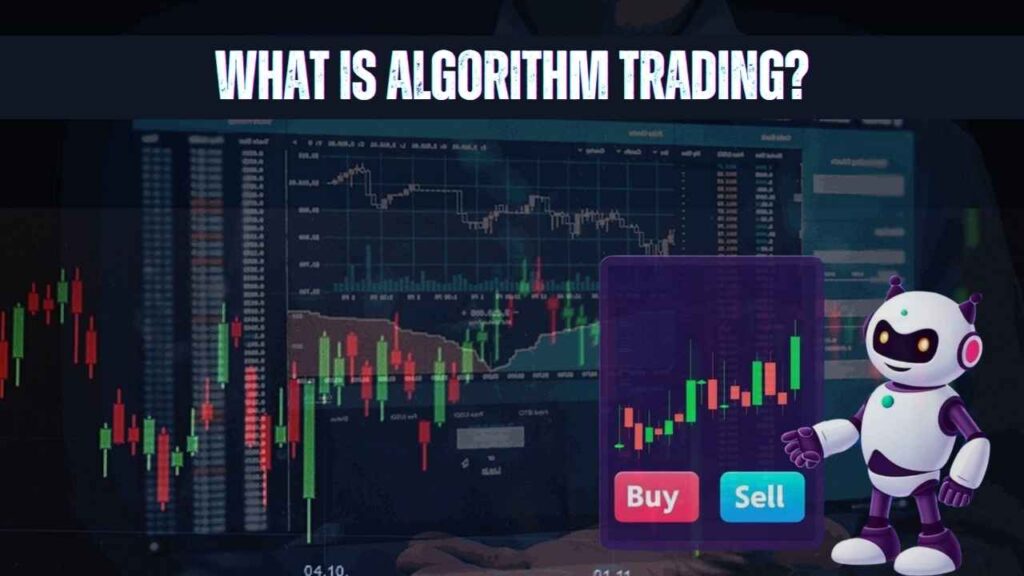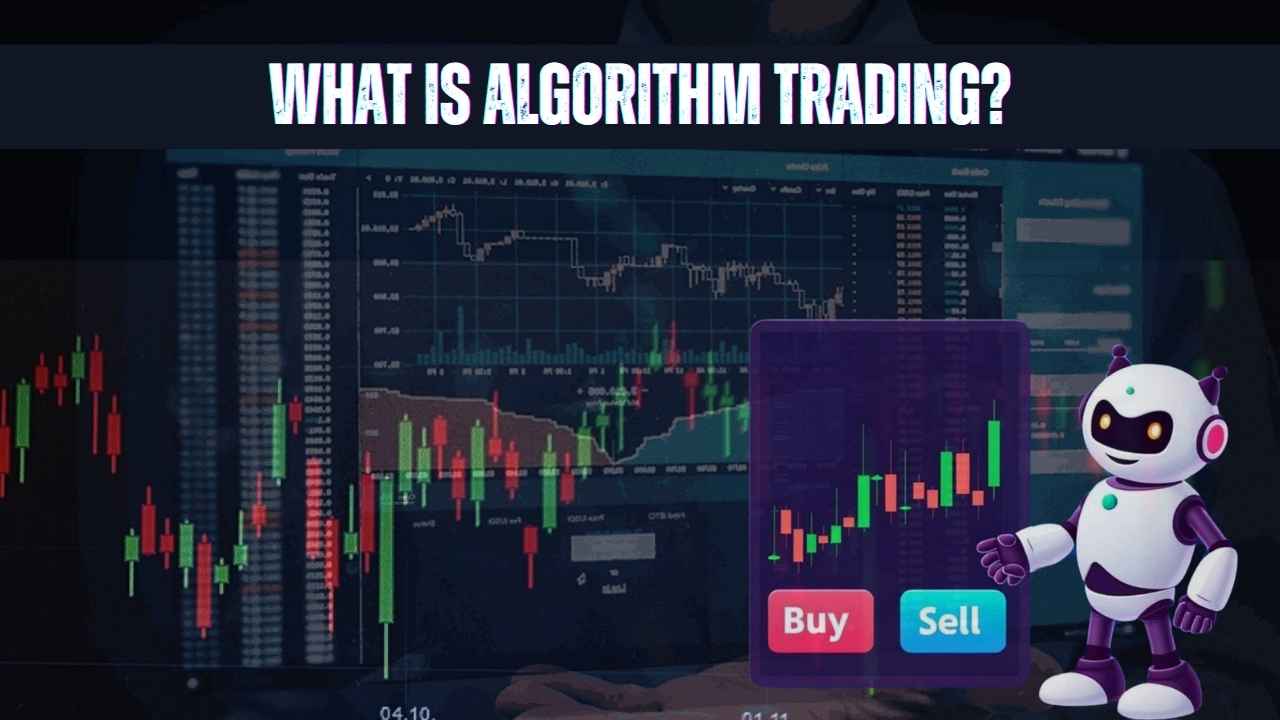Algorithm trading, or more commonly known as algo trading or automated trading, has transformed the way financial markets function by utilizing computer programs to make trades by set strategies. In this definitive guide, we shall delve into what algorithm trading is, dissect how it functions, and touch on its benefits and drawbacks. Whether you’re a newcomer hoping to learn about the fundamentals or a seasoned trader looking at automatic options, this article gives important information on algorithm trading.
Algorithm trading uses sophisticated algorithms to scan market data, find trading opportunities, and enter orders at rates and volumes much higher than those that can be manually handled. The strategy is commonly utilized by institutional investors and hedge funds, but is becoming popular with retail traders who want to optimize their trading efficiency and cut down emotional bias.
With the fast development of technology and the presence of strong trading platforms, algorithm trading is now more accessible than ever. But first, you have to know its advantages and disadvantages before you plunge in. In this blog entry, we’ll discuss everything about algorithm trading that you need to know.

What is Algorithm Trading?
Algorithm trading refers to the execution of trades using computer programs (algorithms) to make trading decisions. The algorithms are constructed according to pre-established specifications, such as price, volume, timing, and other market factors, to make trades independently without any intervention from traders. Algorithm trading has the main purpose of taking advantage of market opportunities more effectively by:
- Executing trades at high speed: Algorithms can process millions of data points in milliseconds, enabling fast execution.
- Minimizing emotional interference: Automated strategies help eliminate the emotional biases that often lead to poor trading decisions.
- Enhancing precision: Trades are executed exactly when the predefined criteria are met, often leading to better entry and exit points.
How Does Algorithm Trading Work?
Algorithm trading involves several key components:
- Strategy Development:
Traders design an algorithm from technical analysis, past data, statistical models, and trading signals. This approach specifies when to make an entry or exit in a trade, the trade size, and risk management parameters including stop-loss and take-profit levels. - Backtesting:
Before using a strategy in the real market, it is backtested with historical data to confirm that it works. Backtesting reveals issues and makes adjustments to the algorithm for actual-market scenarios. - Execution:
After optimizing the algorithm, it is executed on a trading platform. The program continuously keeps an eye on market conditions and places trades automatically whenever the specified conditions are met. - Monitoring and Optimization:
Even after being deployed, frequent monitoring is critical. Markets change, and thus traders must fine-tune their algorithms from time to time in order to be effective and be able to cater to emerging trends in the market.
Pros of Algorithm Trading
1. Speed and Efficiency
Algorithmic trading can execute orders in a matter of milliseconds, much faster than human intervention. This gives traders the capability to capitalize on transient market opportunities before they evaporate.
2. Elimination of Emotional Bias
Automated trading eliminates the emotional aspects that tend to affect human traders, including fear, greed, or panic. This results in more disciplined and consistent trading choices.
3. Increased Consistency
Since algorithms adhere to defined rules, they make trades consistently without wavering, making sure each trade adheres to your desired criteria.
4. Backtesting Capabilities
Traders are able to test their strategy on historical data in order to fine-tune and enhance it before it goes live in real markets. This helps to minimize the chances of unexpected market occurrences undermining the strategy.
5. Cost Efficiency
Automating the trading process, you are potentially saving operational expenses, preventing manual mistakes, and optimizing trade execution, which all equate to increased net returns.
Cons of Algorithm Trading
1. High Initial Setup Complexity
Creating and executing an effective algorithmic trading strategy needs good knowledge of trading principles as well as programming. Novices might encounter a high learning barrier when they initiate.
2. Technical Risks
Technical problems like software glitches, server crashes, or connectivity issues can halt trading and result in unplanned losses. Periodic maintenance and solid infrastructure are vital to avoid such risks.
3. Over-Optimization
Overdependence on historical data for backtesting may result in overfitting, when the algorithm is outstandingly good on historical data but remains incapable of handling future market scenarios.
4. Market Volatility
No matter how good the algorithms, they cannot always foresee market shocks or abrupt changes. Volatility can cause sudden and unexpected losses, provided risk management parameters are incorrectly set.
5. Regulatory and Compliance Risks
Algorithmic trading comes with stringent regulatory control. Regulatory change or failure to observe trading standards can attract penalties or halting of trading operations.
Final Thought
Algorithm trading holds vast promise for individuals who want to leverage the power of technology in financial markets. Its velocity, accuracy, and capacity to eliminate emotional trading can deliver a tremendous advantage—particularly in today’s fast-moving market environment. Yet, the intricacies entailed, along with built-in technical and regulatory risk, ensure that well-planned strategy, constant monitoring, and repeated optimization are essential to success.
For traders at all levels, understanding both the pros and cons of algorithm trading is essential in making informed decisions that align with long-term financial goals. Whether you’re automating your trades to capture every market opportunity or exploring algorithmic strategies as part of your overall investment plan, start with a solid foundation of knowledge and sound risk management practices.
Frequently Asked Questions (FAQ)
Q1. What is algorithm trading?
A: Algorithm trading consists of using software programs to initiate trades automatically with rules such as price, quantity, and time.
Q2. How does algorithm trading eliminate emotional bias?
A: Since algorithms make automatic decisions to carry out trades as per rules, they rule out human emotions of fear and greed which can impinge on decision making.
Q3. What are the main risks associated with algorithm trading?
A: The major risks are technical breakdowns, over-optimization, market fluctuations, and regulatory issues. Good risk management policies are necessary to counter these risks.
Q4. Can beginners start algorithm trading?
A: Yes, but it’s necessary to have a good background in both market fundamentals and coding. Beginners should begin with learning material, demo accounts, and progressively develop their strategies.
Q5. How often should I update my trading algorithm?
A: There is a need for regular monitoring and periodic revision to keep up with evolving market conditions and maintain the algorithm’s performance over time.











